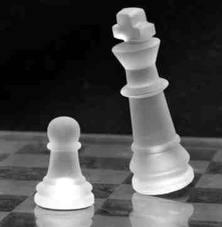
The "Simplest" Thing in Chess (Part Four)
Last week we analyzed the game Koull - Stanciu where the leader of the Scotland's women Olympic team resigned in an absolutely drawn position. Unfortunately, such a case of the 'ultimate blunder' is more common in pawn endgames then you might think! All the games we are going to analyze today were played by strong chess players who completely misjudged the King and Pawn endgame. That should be another proof of how complicated these seemingly simple endgames can be.
Edgar Colle was a very strong chess Master ( see my article about him and his opening here: http://www.chess.com/article/view/openings-for-tactical-players-colle-system). Yet, in the above mentioned game he resigned in a drawn position. Yes, his h5 pawn will be lost for sure and yet it doesn't give White enough advantage to win. Judge for yourself:
Of course, Colle's task would have been much simpler had he known the following classical game, where opponents agreed for a draw in a similar position:
This is another good example that "Knowledge is power". However, if you read this article : http://www.chess.com/article/view/butterfly-effect , you'll know that this is not always the case, as the next game illustrates:
You might ask why this variation was so obvious for Alexey Shirov? Because just 4 years before this game he had a pretty similar King and Pawn endgame against GM Vladimir Akopian:
Unfortunately, there is one tiny difference between two games. Black's c7 pawn in the Shirov - Timman game is still alive. Both Grandmasters thought that it makes no difference since Black King cannot defend the c7 pawn while watching White f6 pawn. But it turns out that it is not true. Here is what GM Alexey Shirov wrote in the later edition of his book "Fire on Board":
"The real difference from that game is in fact that here Black has a pawn on c7. Thus when White's king is on c6 Black puts his to d8 and there is no zugzwang since White's pawn is already on h4 and there is no way to give Black the turn. Therefore Timman simply resigned in a drawn position. This draw was discovered by an amateur from Switzerland."
I hope you, my dear readers, have learned a valuable lesson from these games. So, if you ever have a similar King and Pawn endgame (and as you could see, this type of a position is relatively common), I am sure you are not going to repeat the mistakes made by these strong Grandmasters!
to be continued...






